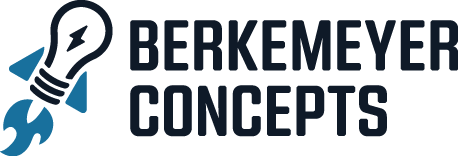Building a custom software application can be daunting. If you’ve never done it before, it’s hard to know where to start.
Five simple steps to create a custom software application
Here are the essential tasks that ensure custom software development ends in success.
- Begin with the end in mind
- Assemble your team
- Plan your work
- Develop, test, and review iteratively
- Review/Repeat
Begin with the end in mind
Know what you are creating before you start because custom software development is costly. Don’t waste time making anything you don’t need. Take the time upfront to consider precisely what your software should do to support your business objectives. You don’t need to get into every minute detail. You just need to understand what the software should accomplish on behalf of your users. User stories and user journeys can help you achieve this.
Assemble your team
Choosing the right team is critical to the success of your project. You should establish a cross-functional team that can work collaboratively together.
The team should include the following roles:
- Product owner – This is the key stakeholder with a deep understanding of users and the marketplace. They define what functionality should be in the product.
- Software developers – There is a broad range of skills that fall into this category. The software development team will perform all kinds of tasks, including User Experience Design (UX), Data Analytics, Database creation and administration (DBA), as well as writing the code for the application.
- Testers – Depending on the size of your project, you may have one or more dedicated testers. It is also common for all of the team members to fill this role without having any one person dedicated solely to it.
- Business Analyst – This person analyzes the business domain, documents, and processes and outlines what the software must do to support the business objectives.
It is OK to have one person play multiple roles on the team. What is essential is that the roles are filled, and the person responsible for that role is identified.
Plan your work
Take the user stories and put them into a backlog. Your backlog lists all the high-level tasks needed to build software that fulfills your user stories. Next, break your user stories down into smaller tasks. Each task should be as small as possible. Try to break tasks down into something that can be accomplished in about one day. This helps your team better understand what is needed and reduces surprises that were unknown before. Finally, prioritize your tasks to ensure your team focuses on the most critical tasks first.
Develop, test, and review iteratively
Most software is developed iteratively, which helps teams deliver value to their customers faster and with fewer mistakes. The team delivers work in small increments that steadily move the product forward. Each iteration comprises development, testing, and review, with the result being something that can be demonstrated and discussed by the team. For example, even if the only result of an iteration is a window that has text, input boxes, and a button that does nothing, the team can review the layout of the page, the copy of the text, and the color scheme. They can then decide if anything should be altered in the next iteration. These small, steady steps help ensure the result is aligned with the business objectives.
Review/Repeat
As mentioned, working software should be delivered at the end of each iteration. The team will then review the software and reflect on the process. This involves identifying what went well and what could be improved. The team makes the necessary adjustments to improve and starts the cycle again. This process will continue indefinitely throughout the life of your custom software application.
Putting it all together
That’s it in a nutshell. There are many more details, but those five high-level steps will be the foundation your software process is built on.
We are available to talk about your project and help you get started.
We’ve helped dozens of companies like yours build high-quality software designed to scale and grow. We’ll help you clarify your vision, understand your options, and decide how to get where you need to go. Our custom software development services are designed to support you.
I was really impressed with Berkemeyer Concepts
Program Manager, Fives Lund LLC
Our No-Risk Proposition
Schedule a free consultation. We will help you understand your options and share our advice. That’s it. There’s no cost and no further obligation. We promise.
- You schedule an appointment.
- Describe your software challenges and ask any questions you have.
- We share expert advice from our 35+ years of experience.
Yes, it’s really that simple.


